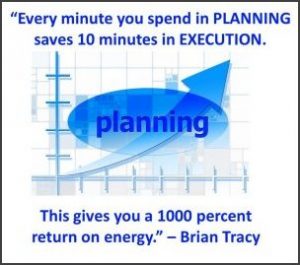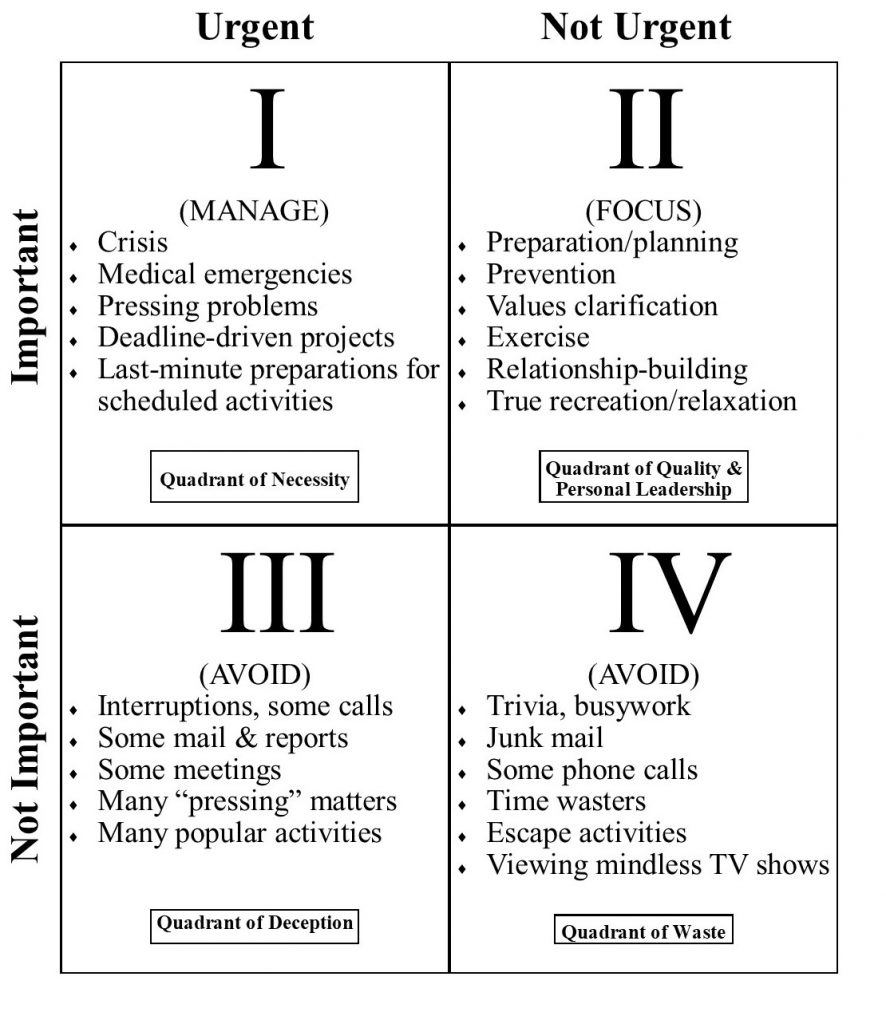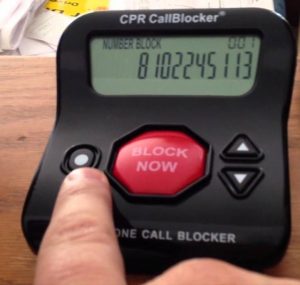So often I hear people say, “I can’t afford to take time out of my busy schedule for planning!” To that I respond, “If you are that tight on time, then you can’t afford NOT to take time out to plan.” I’ll illustrate my point with a real-life example.
 Over the past few years, I have worked with two very bright and capable women who have a lot in common. I’ll call them Carol and Marilyn (not their real names). Both are professionals who supervise a team of employees. Both are married to spouses who also work outside the home. Both are mothers of school-age kids. Both are about the same age. Both struggle with managing the volume of paper and electronic information they receive daily. Looking at these women from the outside, they appear to have a lot in common.
Over the past few years, I have worked with two very bright and capable women who have a lot in common. I’ll call them Carol and Marilyn (not their real names). Both are professionals who supervise a team of employees. Both are married to spouses who also work outside the home. Both are mothers of school-age kids. Both are about the same age. Both struggle with managing the volume of paper and electronic information they receive daily. Looking at these women from the outside, they appear to have a lot in common.
And they are very different.
Carol and Marilyn don’t know each other and they independently hired me to help them get organized. Before teaching them a process I use to manage paper and de-clutter their offices, I spent some time talking with both of them about their priorities. Why? Because organizing one’s physical environment without first clarifying priorities is kind of like rearranging deck chairs on The Titanic!
I’ve shared similar organizing tools and processes with both of these clients, and their responses have been very different. Keep reading to find out how they are so different.
Although I am devoting the majority of this blog to a discussion about managing your time, I want to first point out the difference between management and leadership. Management works within the system. Leadership works on the system. Stephen Covey reminds us that “fundamental to putting first things first in our lives is leadership before management.” It becomes critical to ask yourself, “Am I doing the right things?” before “Am I doing things right?”
Once you’re clear about your priorities (doing the right things), planning and organizing around those priorities is essential. This is because we are a society that is urgency addicted. We tend to focus on what’s urgent — whether the activity is important or not.
If you struggle with a strong urgency mindset, keep reading. I guarantee that you’ll feel more satisfied and fulfilled when you take steps to focus your time and energy on what’s most important and avoid those activities that are less important or not important to you.
Time Management Matrix
In his book First Things First, Stephen Covey offers a wonderful tool for analyzing how you spend your time — the Time Management Matrix.
 Let’s take a deeper dive and look at each of the four quadrants in Covey’s Time Management Matrix.
Let’s take a deeper dive and look at each of the four quadrants in Covey’s Time Management Matrix.
Quadrant I: Quadrant of Necessity
 This quadrant represents activities that are necessary for you to focus on because they are urgent (time-sensitive) and important to you.
This quadrant represents activities that are necessary for you to focus on because they are urgent (time-sensitive) and important to you.
We tend to focus on Q-I activities because they are urgent and the need to do these activities makes itself known to us. As they say, “the squeaky wheel gets the oil.” These activities are hard to ignore because our life experiences have taught us that when we ignore Q-I activities, we get into trouble.
Quadrant II: Quadrant of Quality and Personal Leadership
This quadrant represents activities that are important, but because they are not urgent, they are easy to put on the back burner for “when I get around to it.” In order to focus on these activities, one must be proactive.
The more time we spend in Q-II, the more quality we add to our lives. If we neglect Q-II activities long enough, sometimes they become Q-I activities (urgent and important). For example, exercise is generally considered a Q-II activity because it is important and there is no deadline by which you must exercise. However, if you neglect exercise long enough, it may become a Q-I (urgent) activity when your health care provider tells you that you will face major health problems if you don’t start exercising regularly.
 Unfortunately, more time never comes. You get 168 hours a week, just like everyone else. Effectively translating these high-leverage Quadrant II activities into action requires a framework for effective decision-making about how you spend your time. Most people struggle to find time for the important but not urgent activities in their already-overflowing schedules. You are the only one who can determine what’s important enough to deserve your time.
Unfortunately, more time never comes. You get 168 hours a week, just like everyone else. Effectively translating these high-leverage Quadrant II activities into action requires a framework for effective decision-making about how you spend your time. Most people struggle to find time for the important but not urgent activities in their already-overflowing schedules. You are the only one who can determine what’s important enough to deserve your time.
“The key is not to prioritize your schedule, but to schedule your priorities.” –Stephen Covey
Quadrant III: Quadrant of Deception
This quadrant represents activities that are not important and urgent (time-sensitive). Q-III is known as the Quadrant of Deception, because we get deceived into believing that these activities are important because they are urgent, even though we’ve identified these activities as not important.
 The word “urgent” means that the activity is time-sensitive or deadline-driven. For example, an incoming phone call is considered urgent because the phone is ringing right now. It may or may not be important, but if you don’t answer the phone soon, it will stop ringing. (If you have caller ID, you may be able to determine if the incoming call is important or not before you answer.)
The word “urgent” means that the activity is time-sensitive or deadline-driven. For example, an incoming phone call is considered urgent because the phone is ringing right now. It may or may not be important, but if you don’t answer the phone soon, it will stop ringing. (If you have caller ID, you may be able to determine if the incoming call is important or not before you answer.)
The activities represented in this quadrant are ones that you would do well to say no to or renegotiate. The only exception to this would be activities that are important to someone who is important to you. You may not consider the activity itself to be important to you, but you may deem an activity important because the activity is important to someone who is important to you.
Here’s an example…
Some Q-III activities may be related to tasks required by an employer. For example, an employee is asked to complete a report by the end of today that he does not see any value in creating. Because the employer wants it — and he values his job with his employer and his relationship with his supervisor — the Q-III activity becomes a Q-I activity. It moves from not important to important. In either case, it’s urgent because there’s a deadline for completing the report.
If a large portion of your work is filled with activities that fall into Quadrant III, it may be time to consider a career move.
Many of us are urgency addicted — a self-destructive behavior that temporarily fills a void created by unmet needs. This type of addiction is as dangerous as other commonly recognized addictions and dependencies.
“It’s important to realize that urgency itself is not the problem. The problem is that when urgency is the dominant factor in our lives, importance isn’t. What we regard as “first things” are urgent things. We’re so caught up in doing, we don’t even stop to ask if what we’re doing really needs to be done.” — Stephen Covey
Quadrant IV: Quadrant of Waste
This quadrant represents activities that are not important and are not urgent.
 Most of us do not spend much time in this quadrant because we simply don’t have time to waste. The most common Q-IV activity I encounter in my work with busy people is escape activities. When the stress level gets high enough, some people escape from reality by doing activities that do not address or resolve the problem. This is considered wasteful.
Most of us do not spend much time in this quadrant because we simply don’t have time to waste. The most common Q-IV activity I encounter in my work with busy people is escape activities. When the stress level gets high enough, some people escape from reality by doing activities that do not address or resolve the problem. This is considered wasteful.
Note that the same activity can fall into Q-II or Q-IV. You are the only one who can determine which quadrant the activity belongs in. If you are treating yourself to true recreation and relaxation (resting and renewing yourself), you are in Q-II. If you are engaging in an escape activity (avoiding the problem and not finding a solution), you are in Q-IV. Even if it’s the same activity, it’s the motivation behind the activity that determines which quadrant you are in.
The goal is to manage activities in Quadrant I, focus on activities in Quadrant II, and avoid activities in Quadrants III and IV – activities that you’ve deemed as not important. And yet, because so many of us are urgency-addicted, we tend to spend the bulk of our time in Quadrants I and III – doing activities that are urgent and important or urgent and not important.
“The main thing is to keep the main thing the main thing.” –Stephen Covey
Weekly Planning
Let’s revisit my clients, Carol and Marilyn. Carol has fully embraced a weekly planning process that I taught her. She is noticeably more at peace now than she was when we first started working together. Her quality of life has dramatically improved as she has clarified priorities and has done weekly planning to ensure that she focuses her time on Quadrant I and II activities and avoids Quadrant III and IV activities.
Marilyn has not reserved time for planning. She is too busy putting out fires (Quadrant I and III) to spend time planning for the coming week (a Quadrant II activity). The more she neglects Quadrant II activities – relationship-building, self-care, values clarification, and planning her schedule to accommodate what is most important in her life – the more Quadrant I activities she has to deal with. She generates her own fires and then feels compelled to put them out.
Tune in for next week’s blog to learn a weekly planning process that will help you to keep the main thing the main thing in your work and personal life.
If you’d like a fresh perspective– someone to help you examine your urgency mindset while aligning your vision, priorities, and actions—let’s schedule a no-cost, no-pressure Discovery Call today.
Additional Resources
- Time Analysis Tool: 168 Hours
- Blog: Urgency vs. Importance
- Blog: Manage Your Urgency Mindset
- Blog: Overcome Procrastination
- Blog: Balance Your Life: The Nine Environments of You
- Free Webinar: Managing Priorities
- Free eBook: 7 Strategies to Overcome Overwhelm
- Guide: Dealing with Procrastination
- Guide: Simple Strategies to Increase Your Productivity
- Guide: A Disorganized Procrastinator’s Guide to Time Management & Getting Organized











Such a great post Kathy, and just what I needed right now!
Laura, I’m glad this arrived just when you needed it!